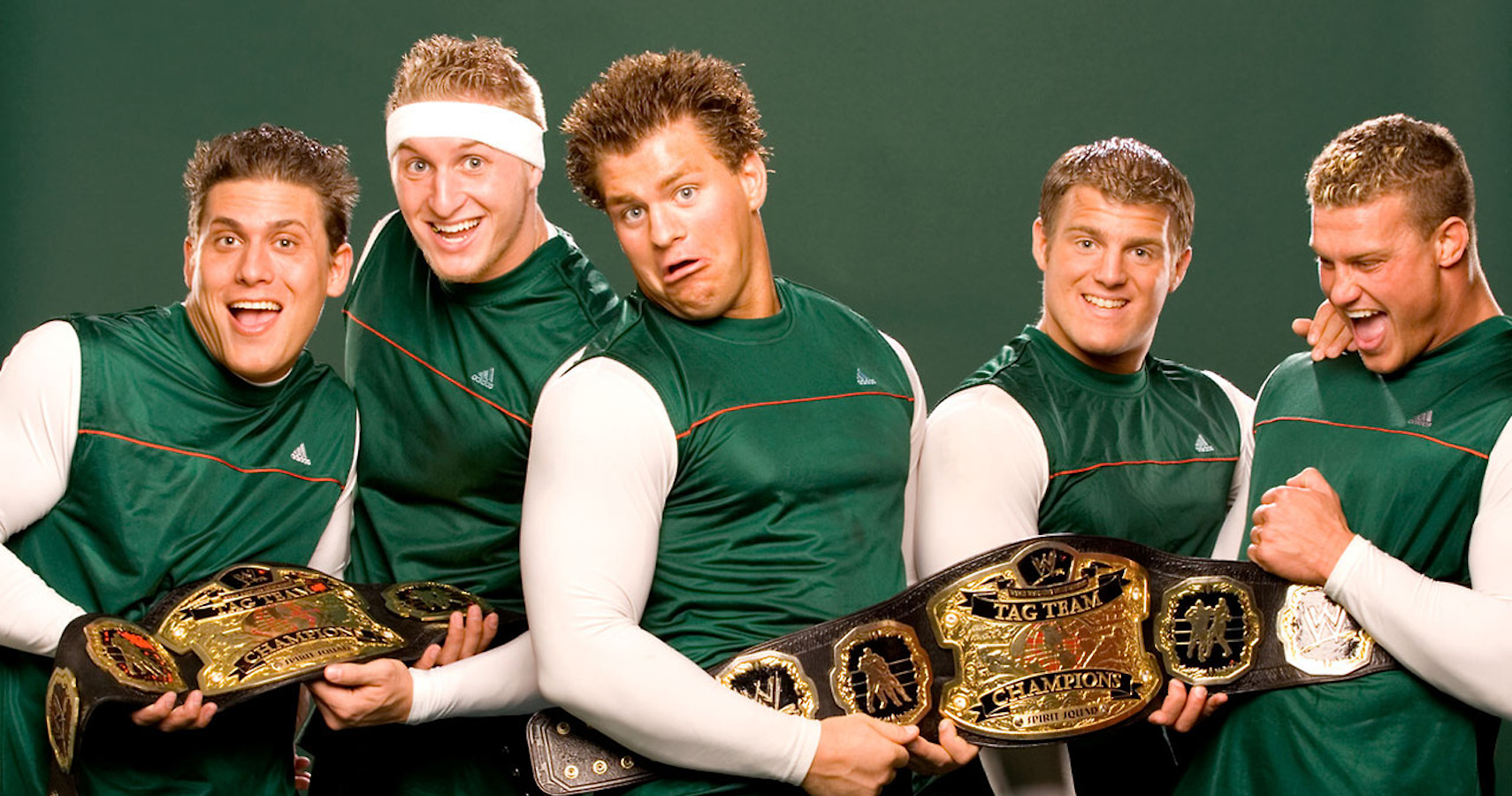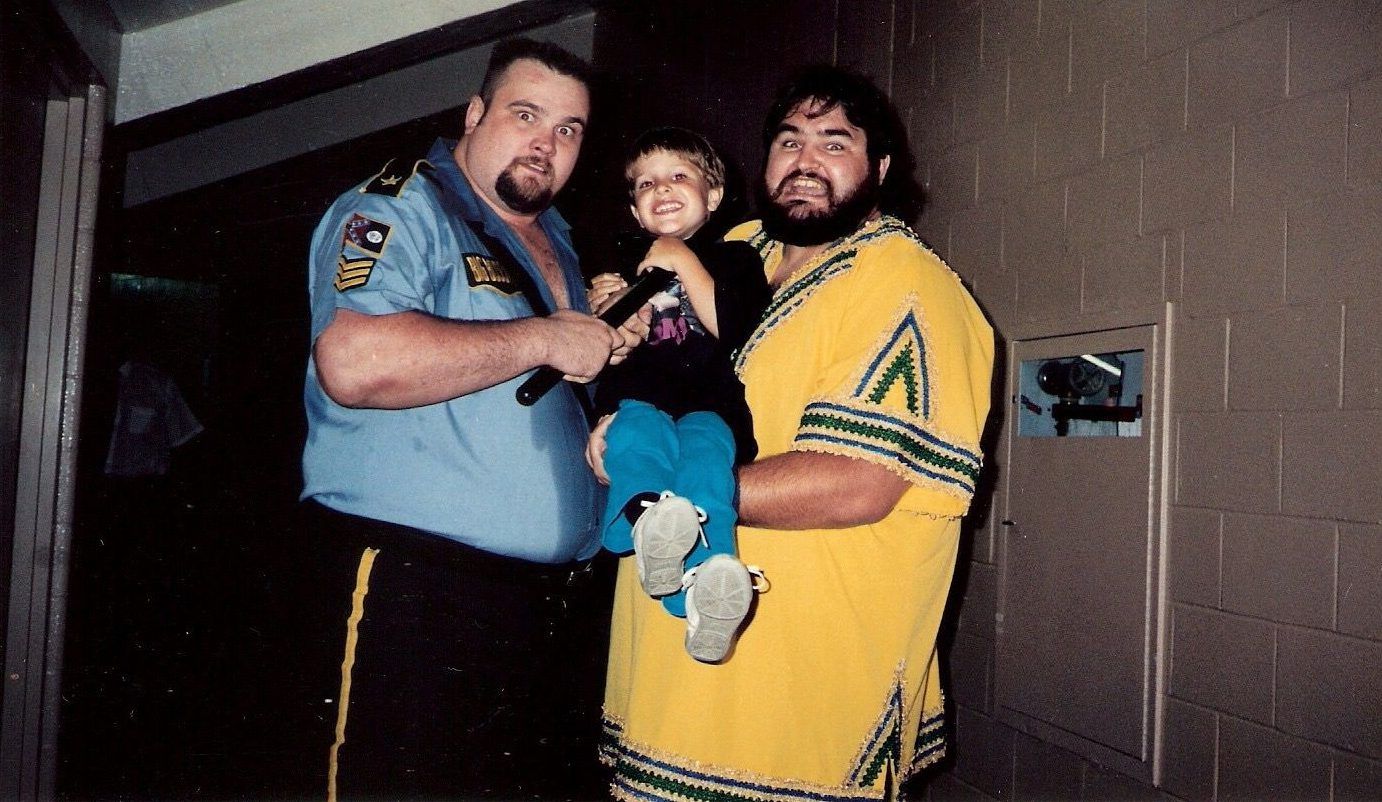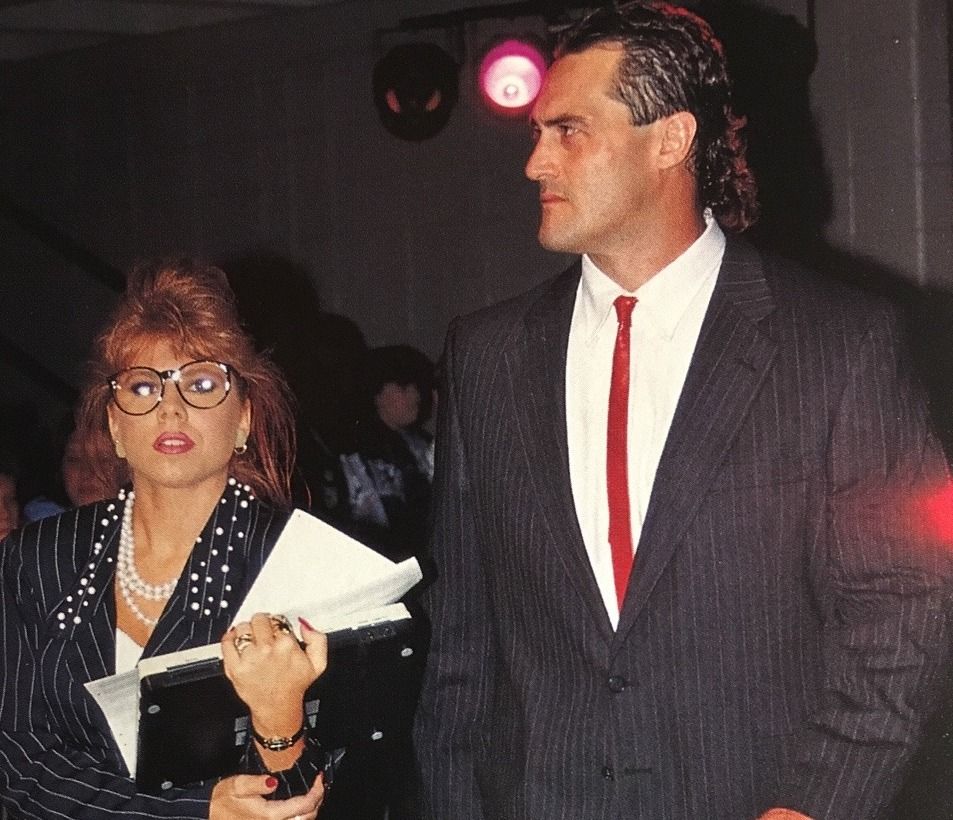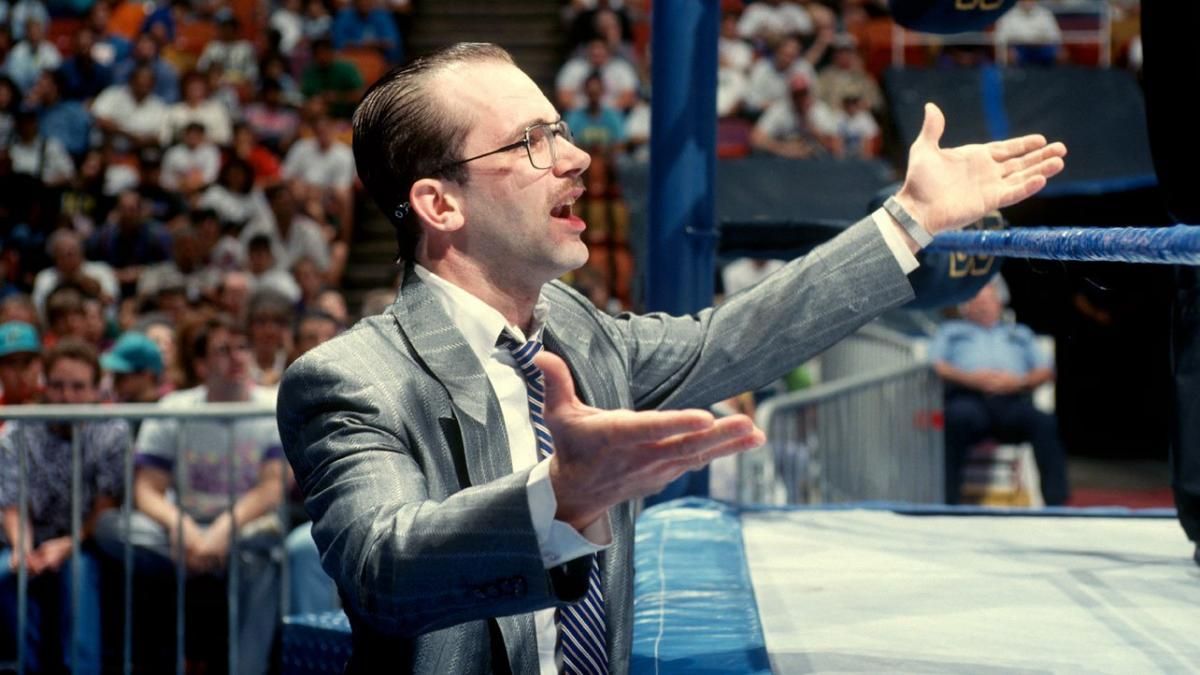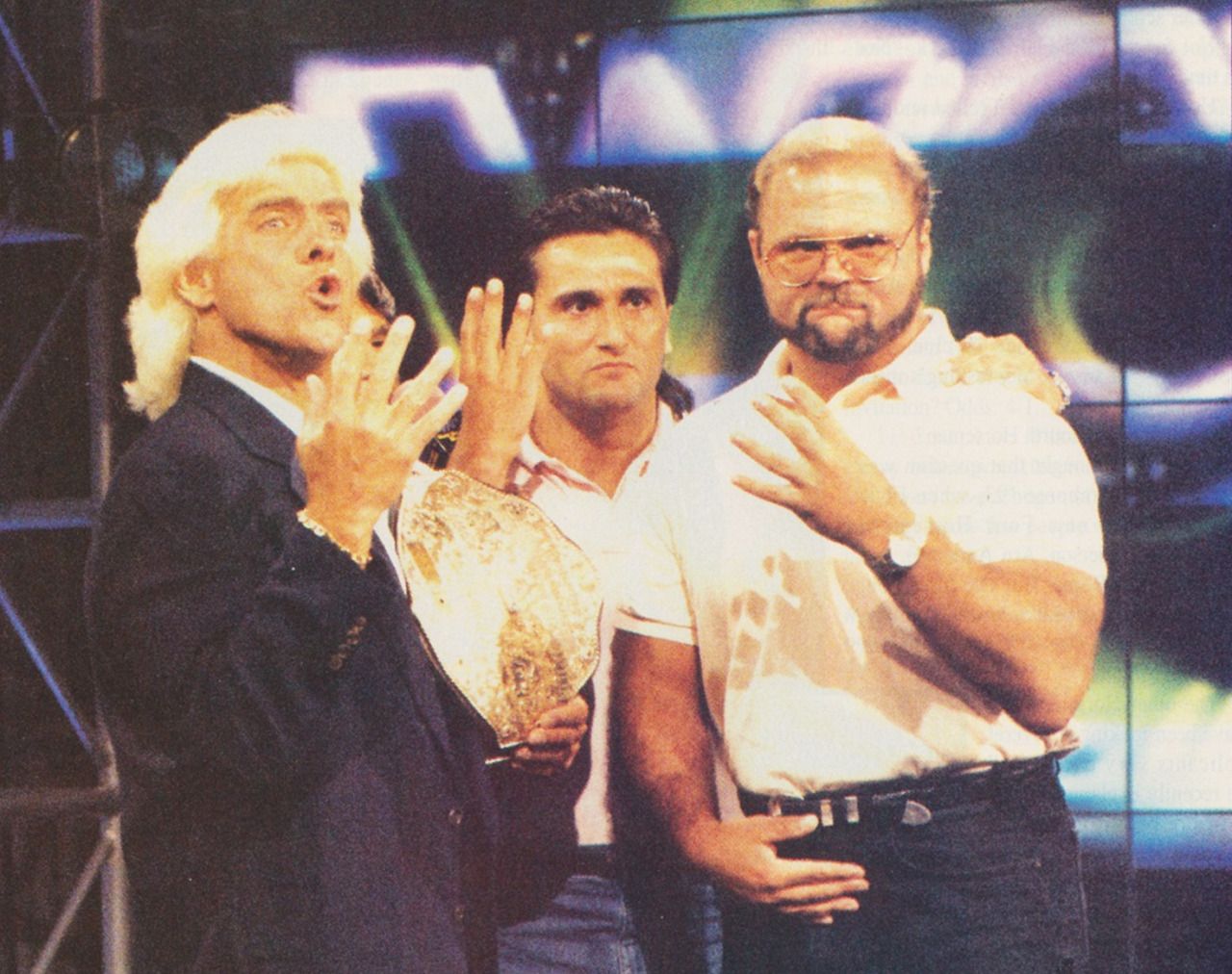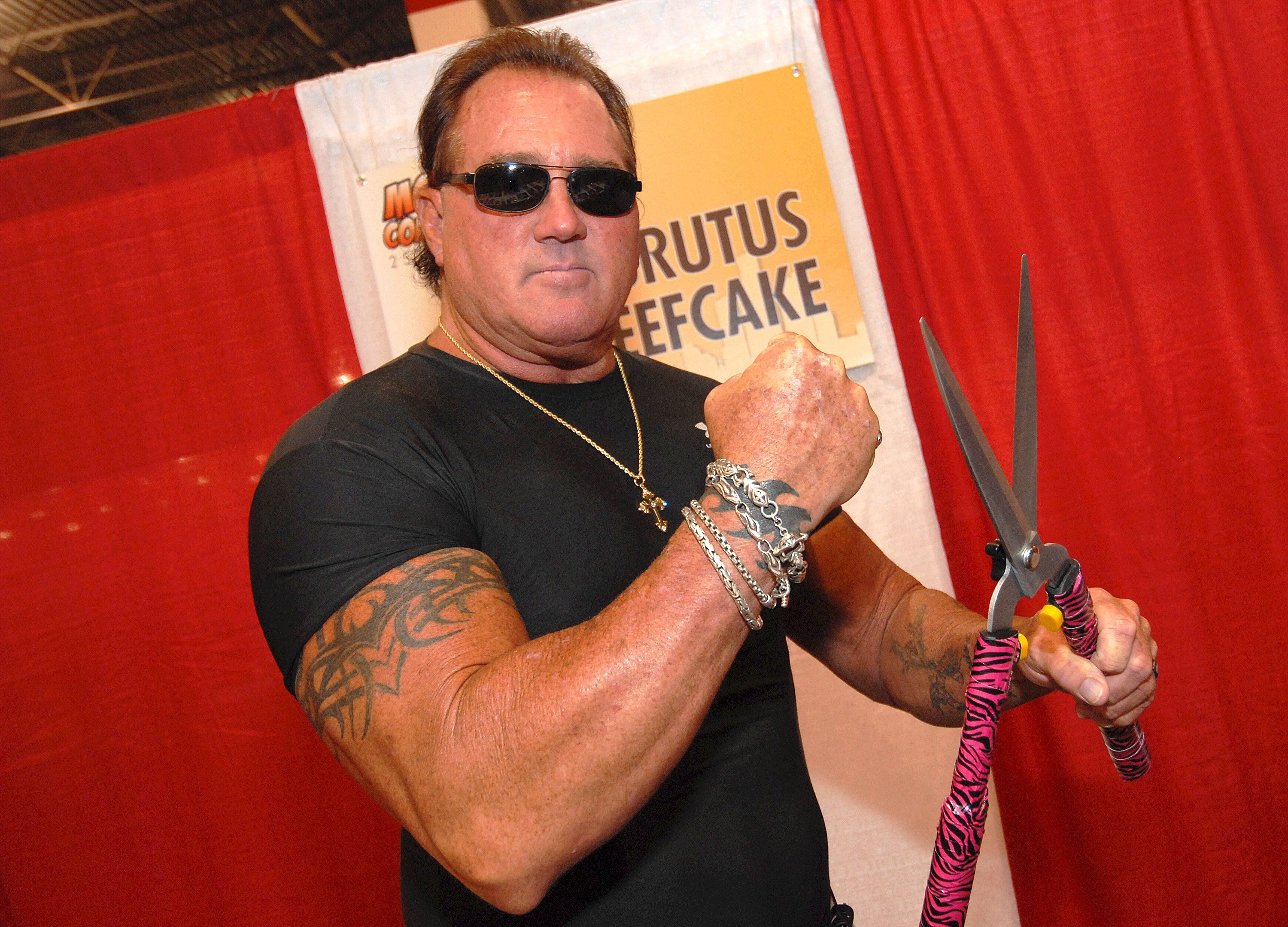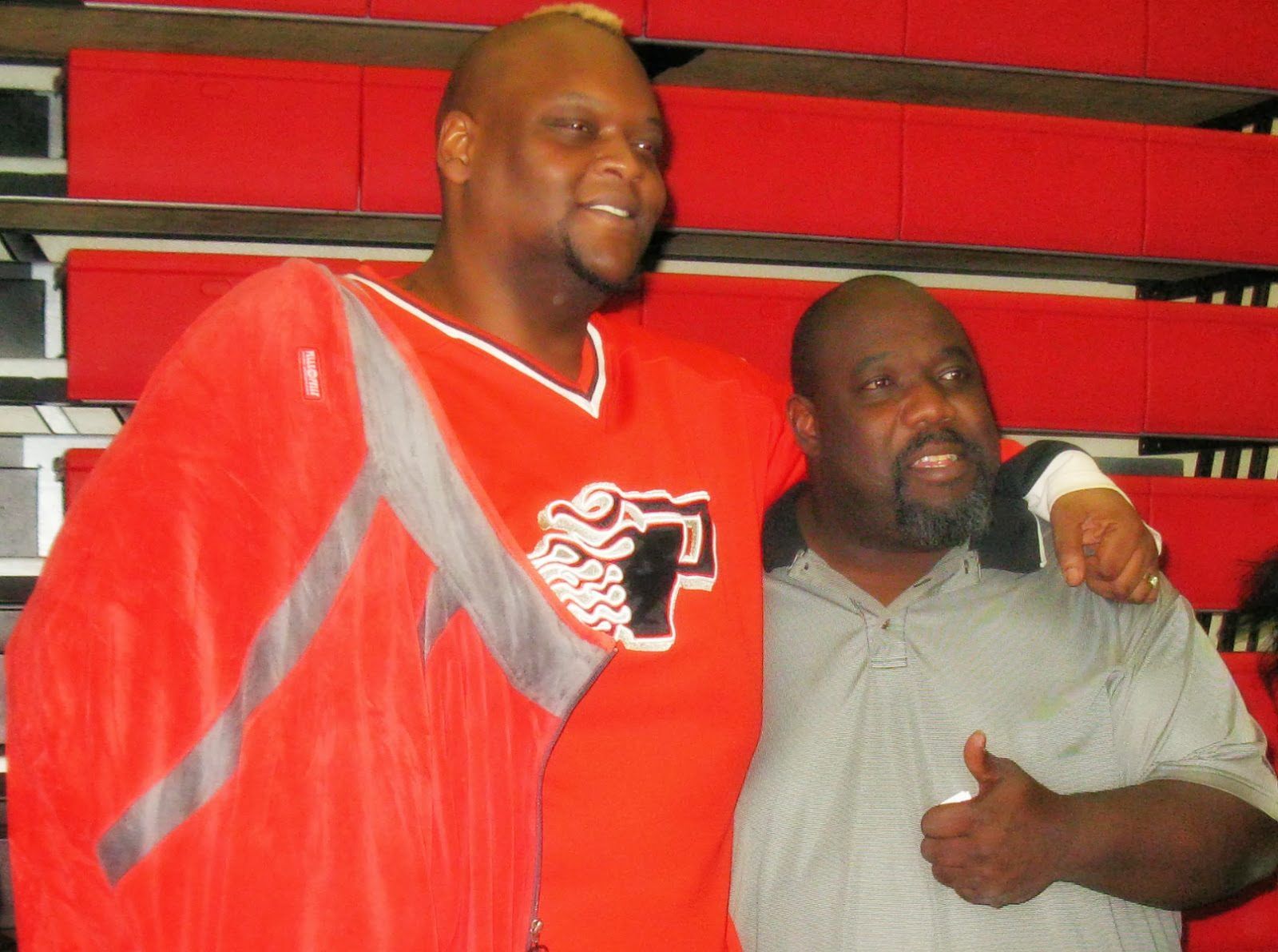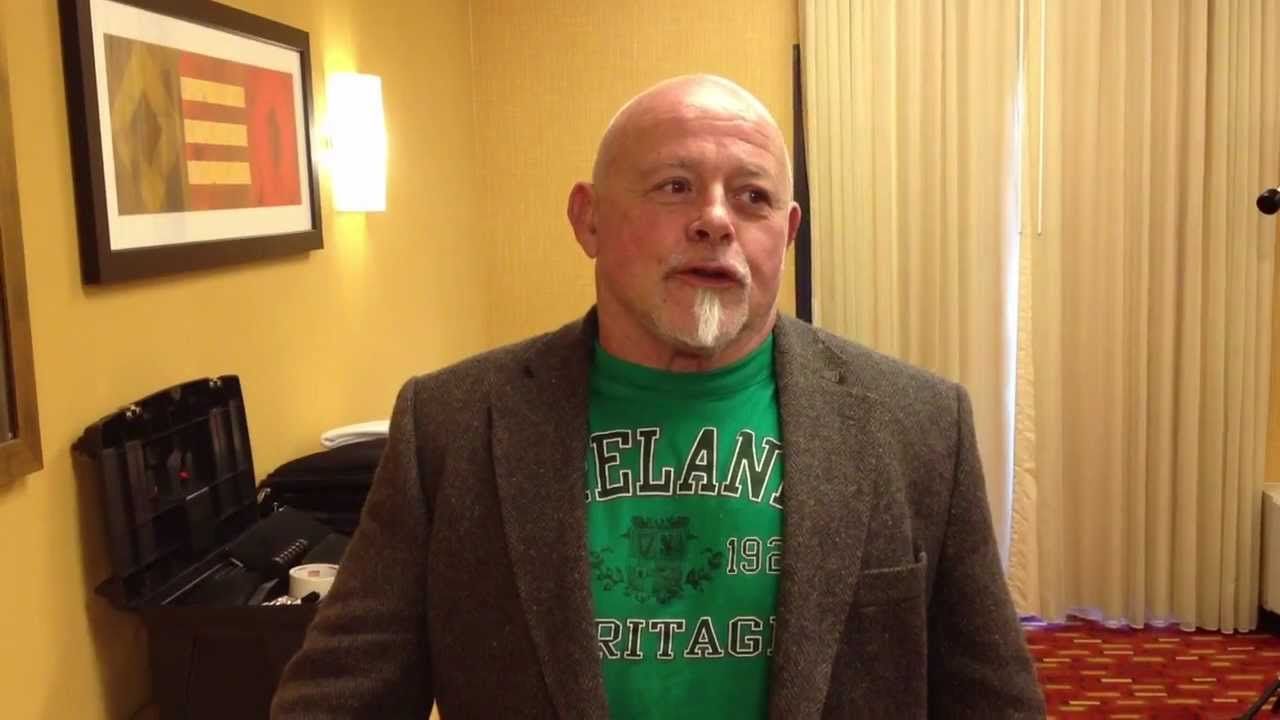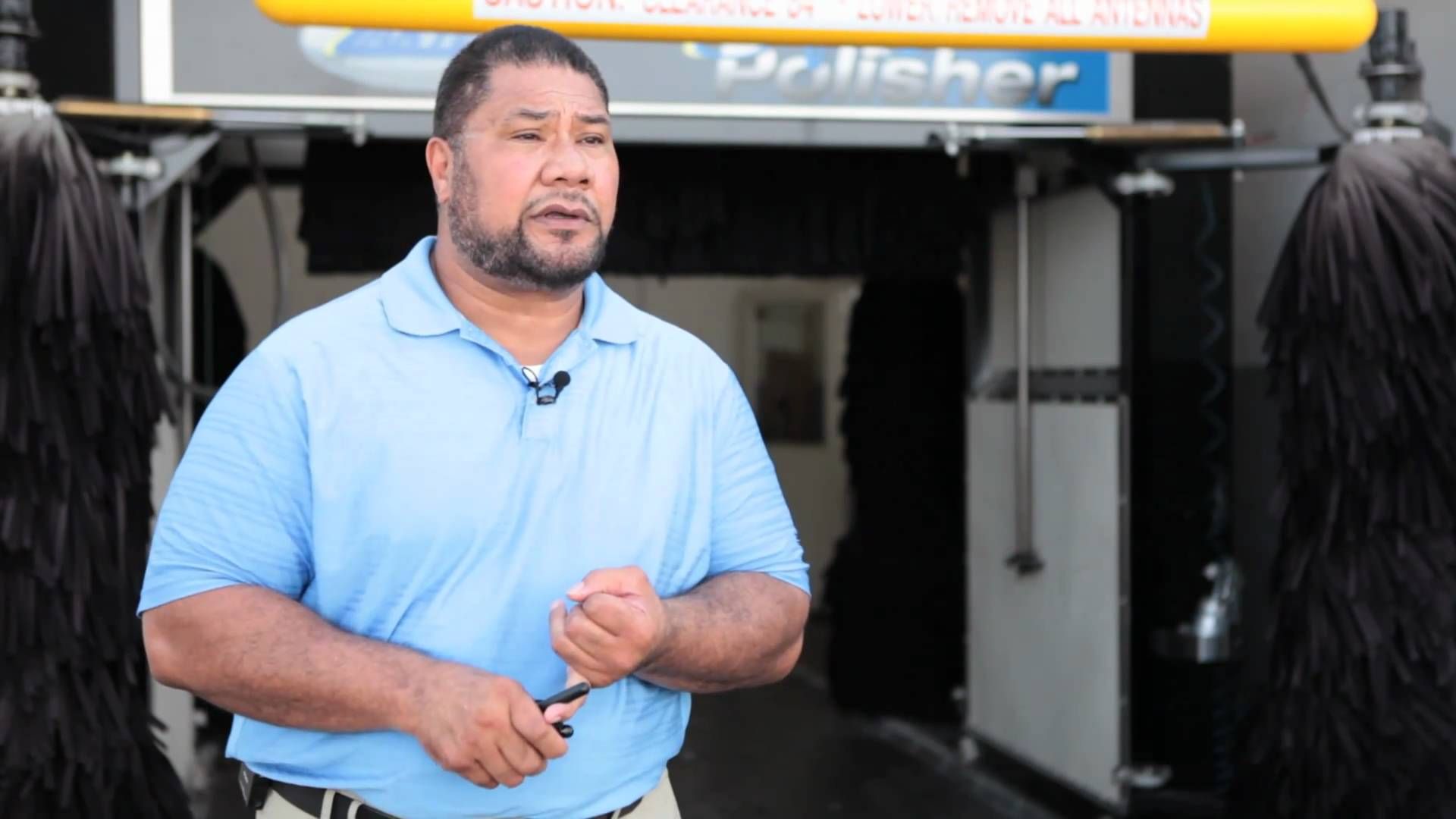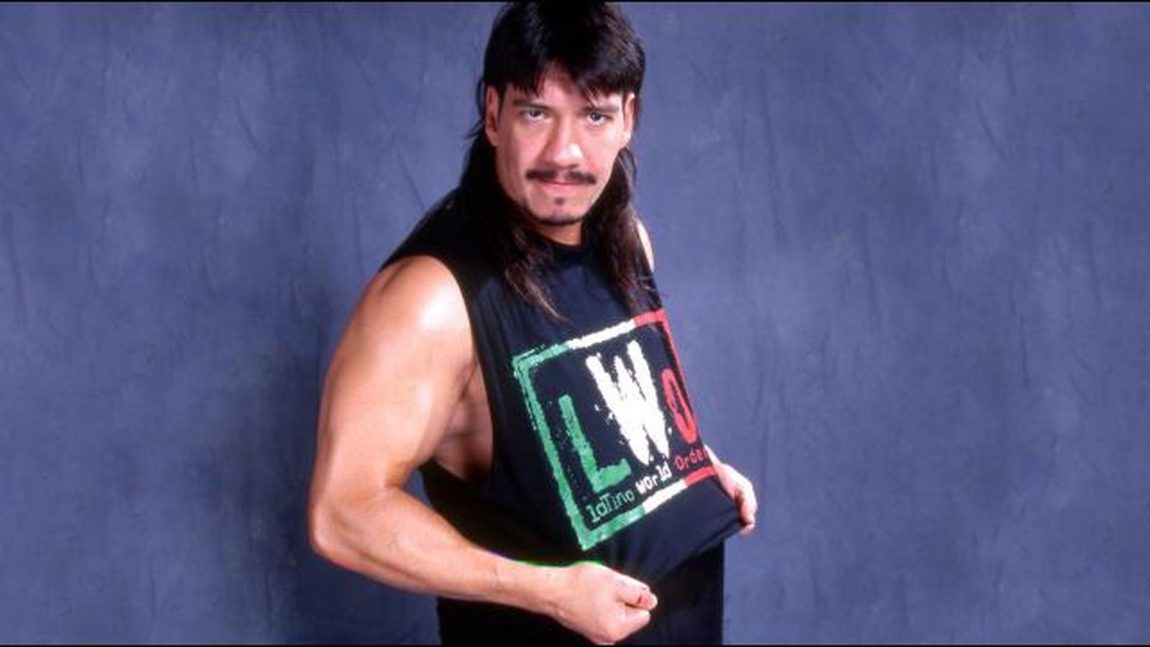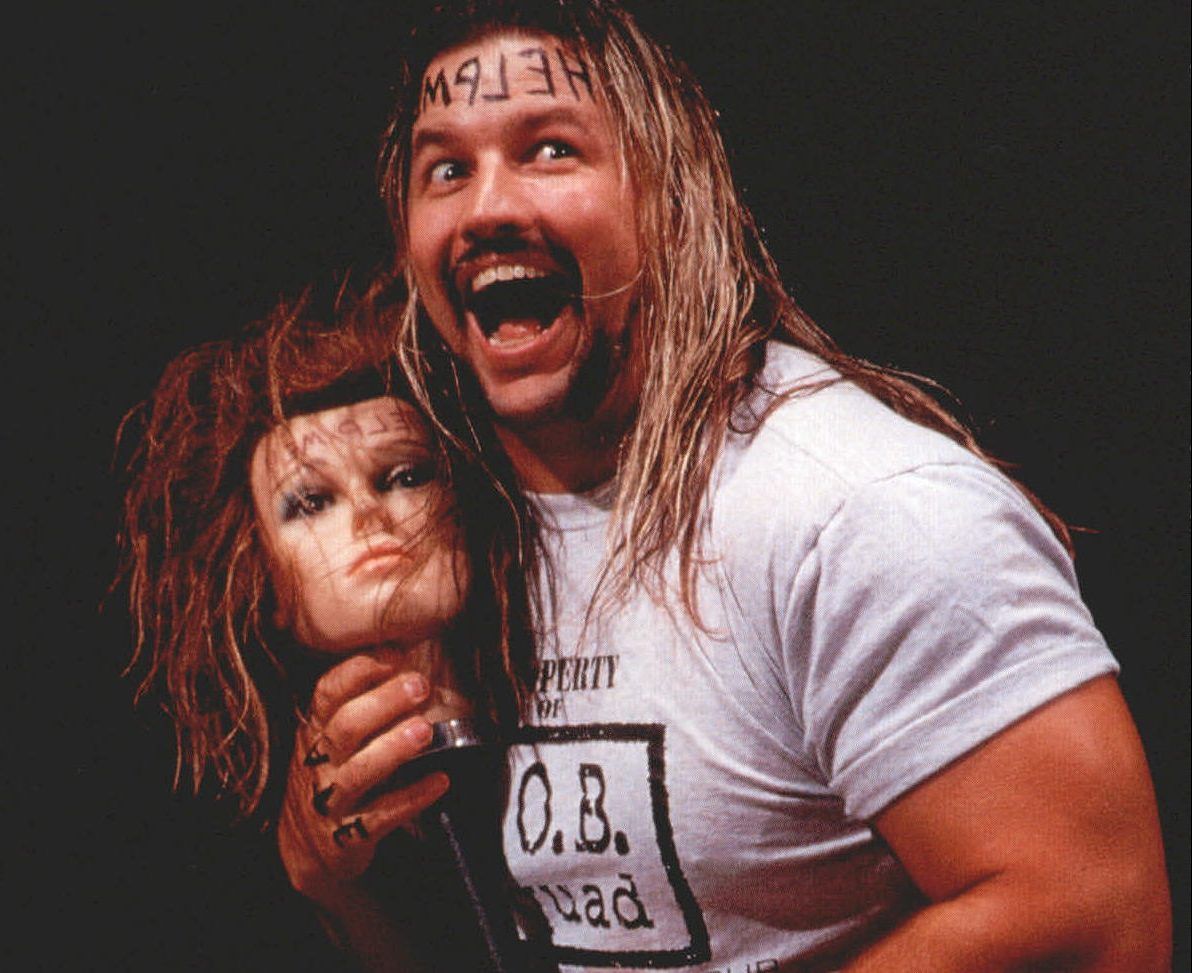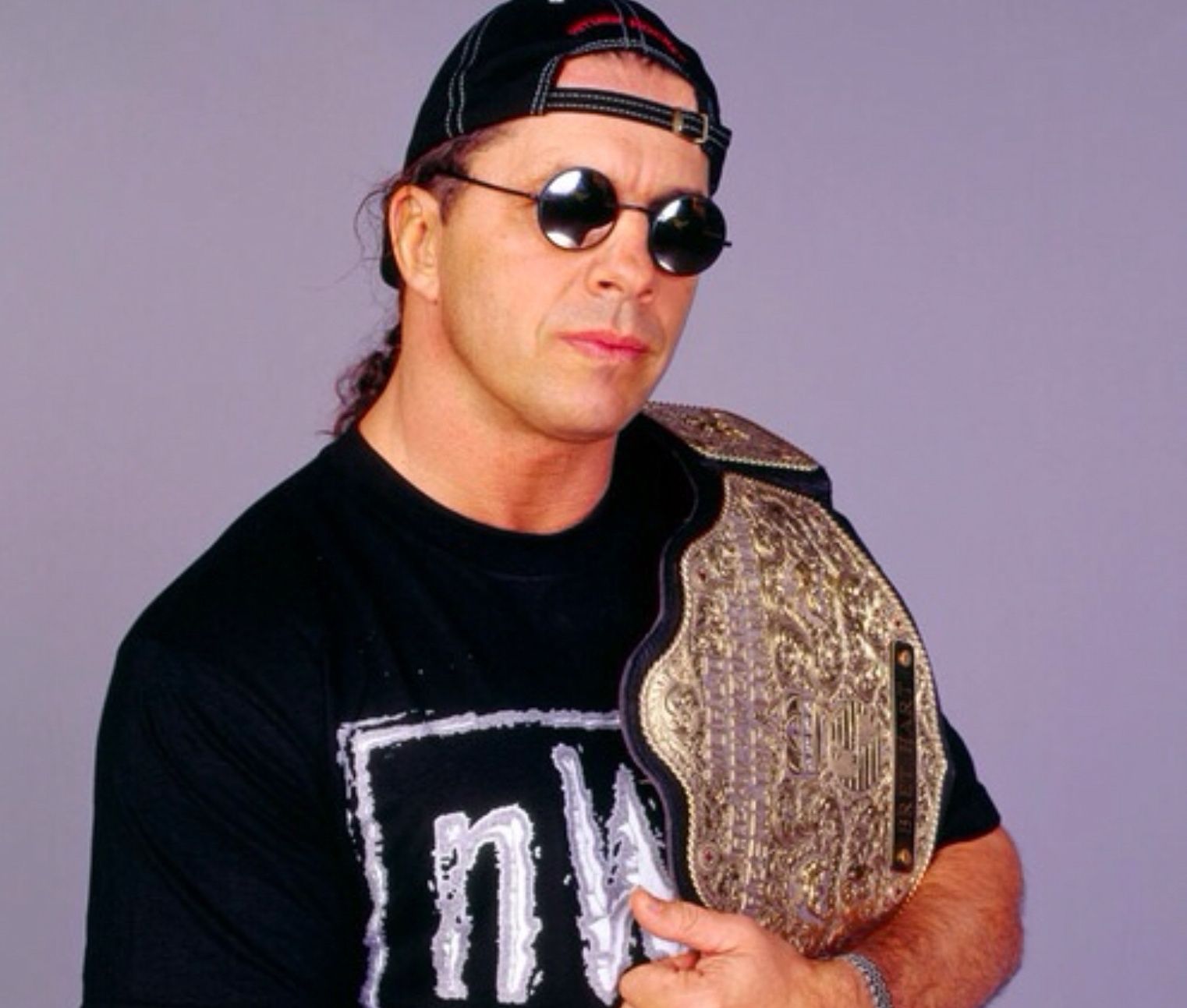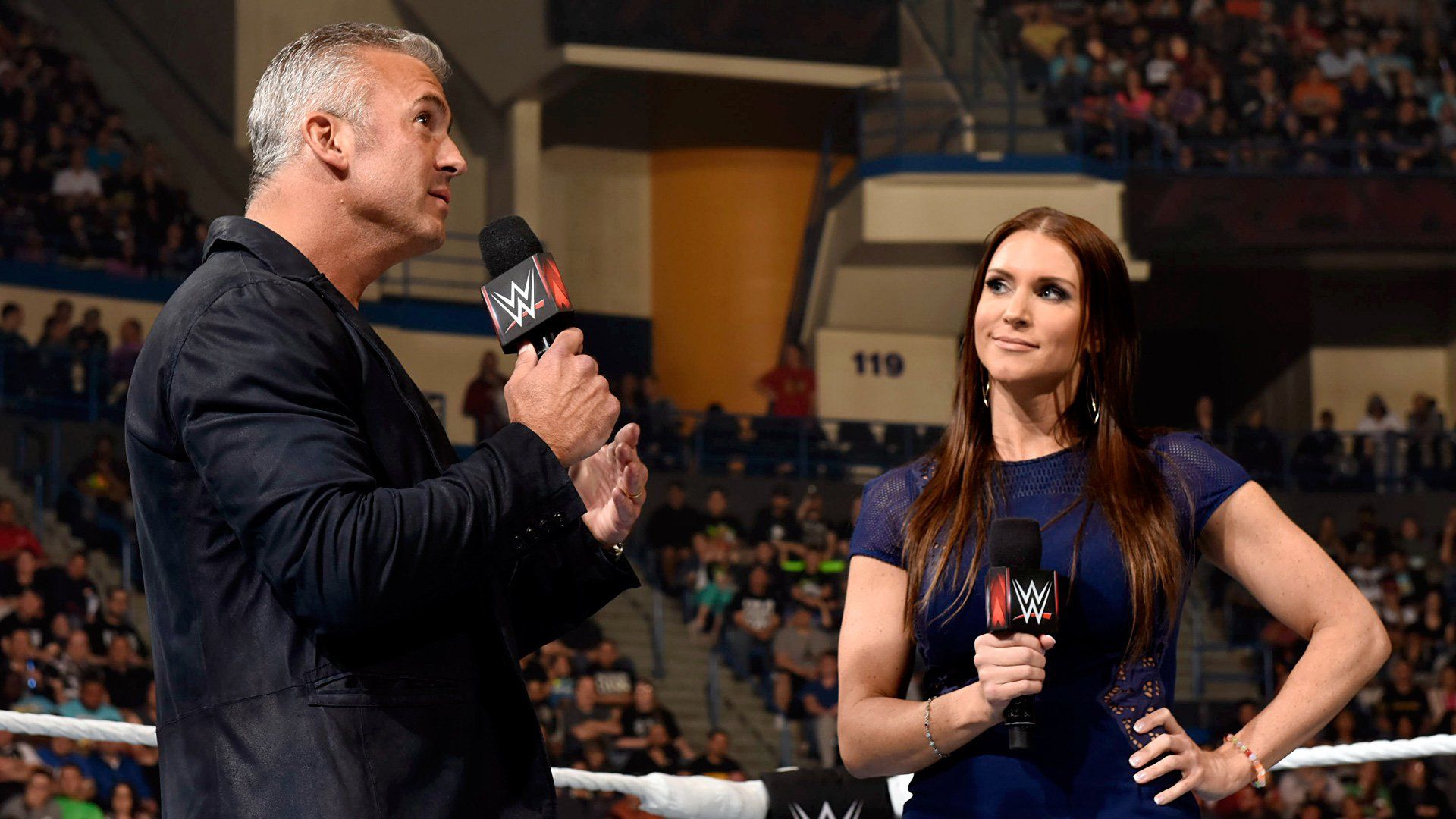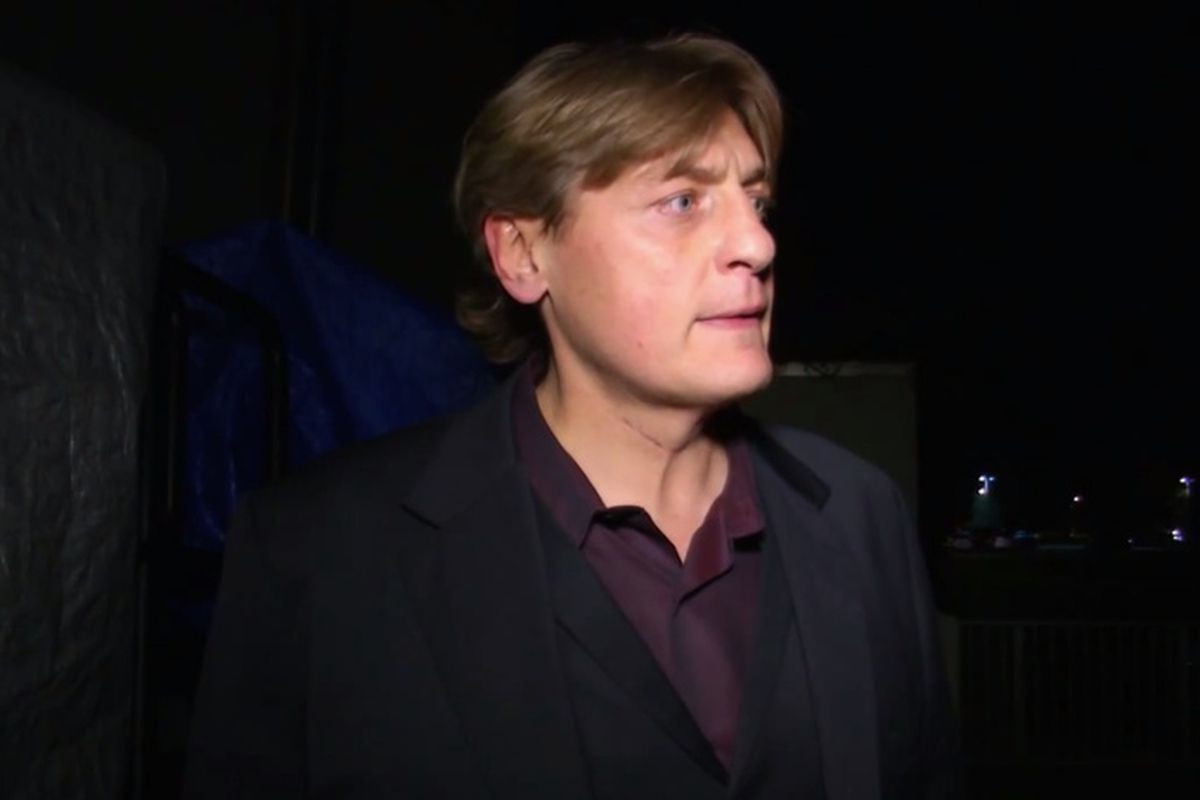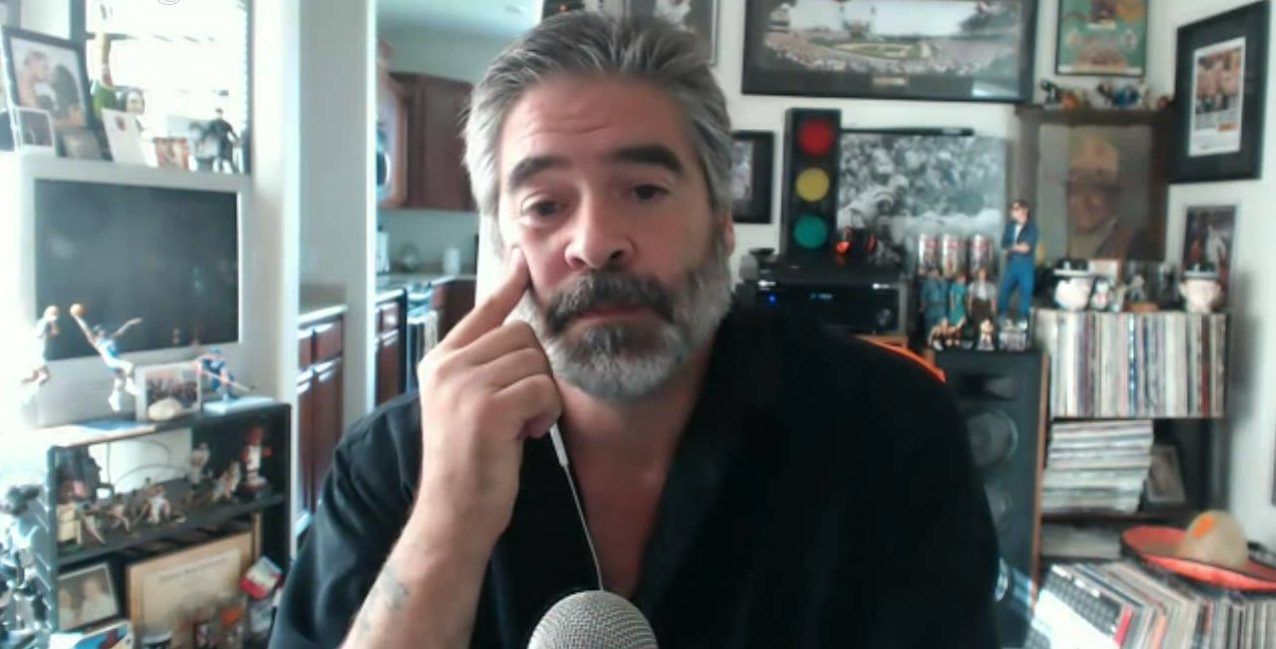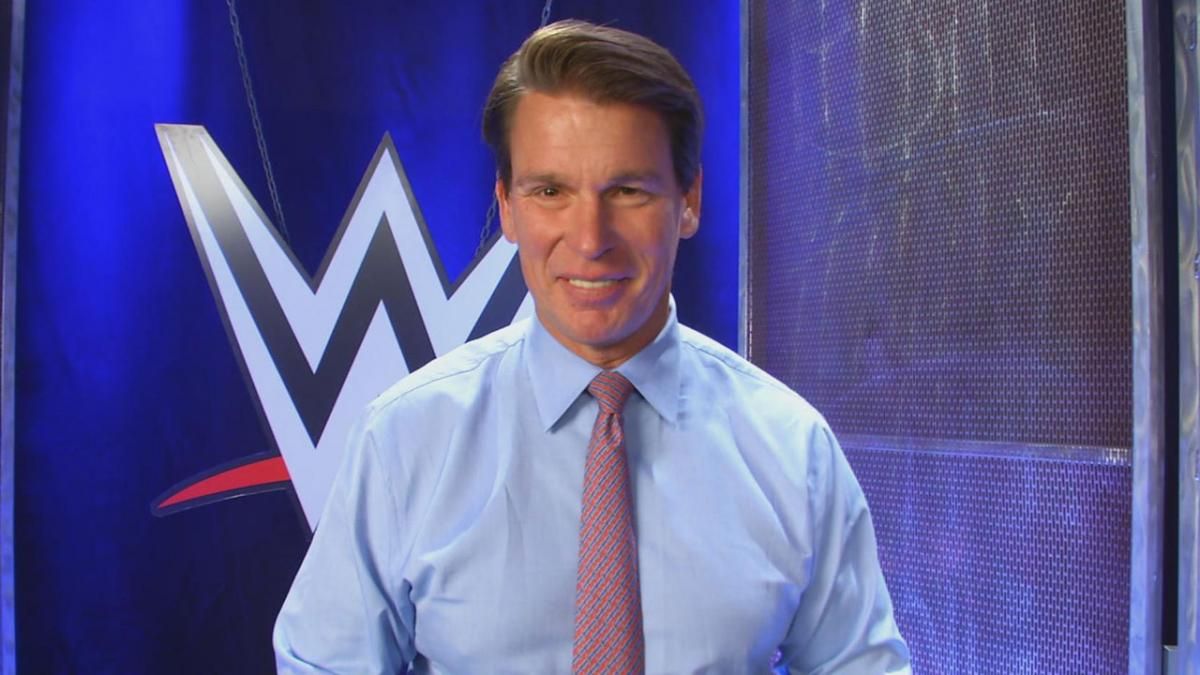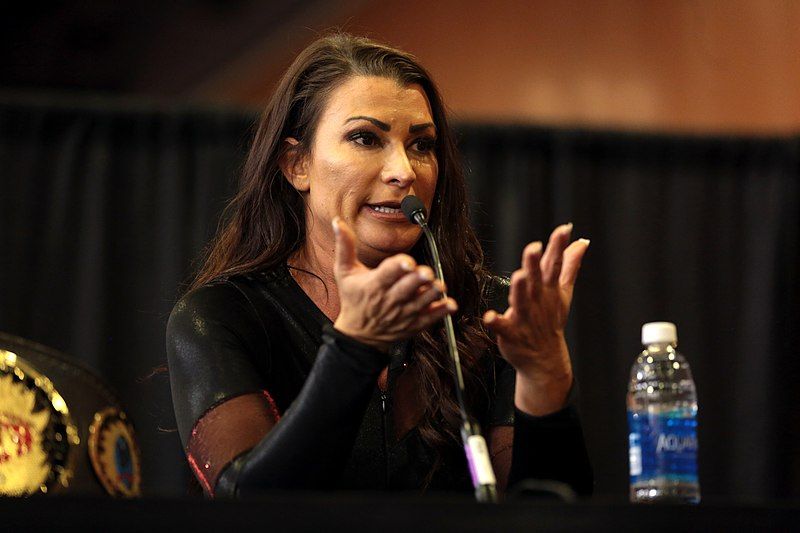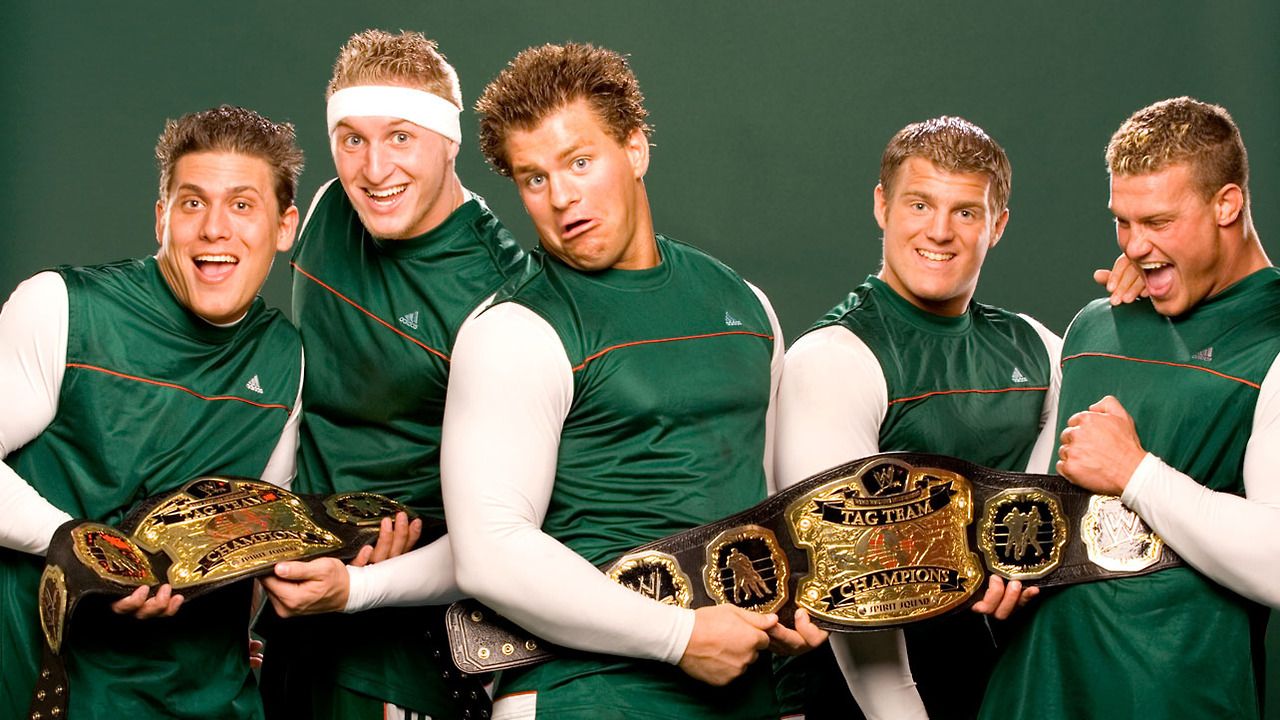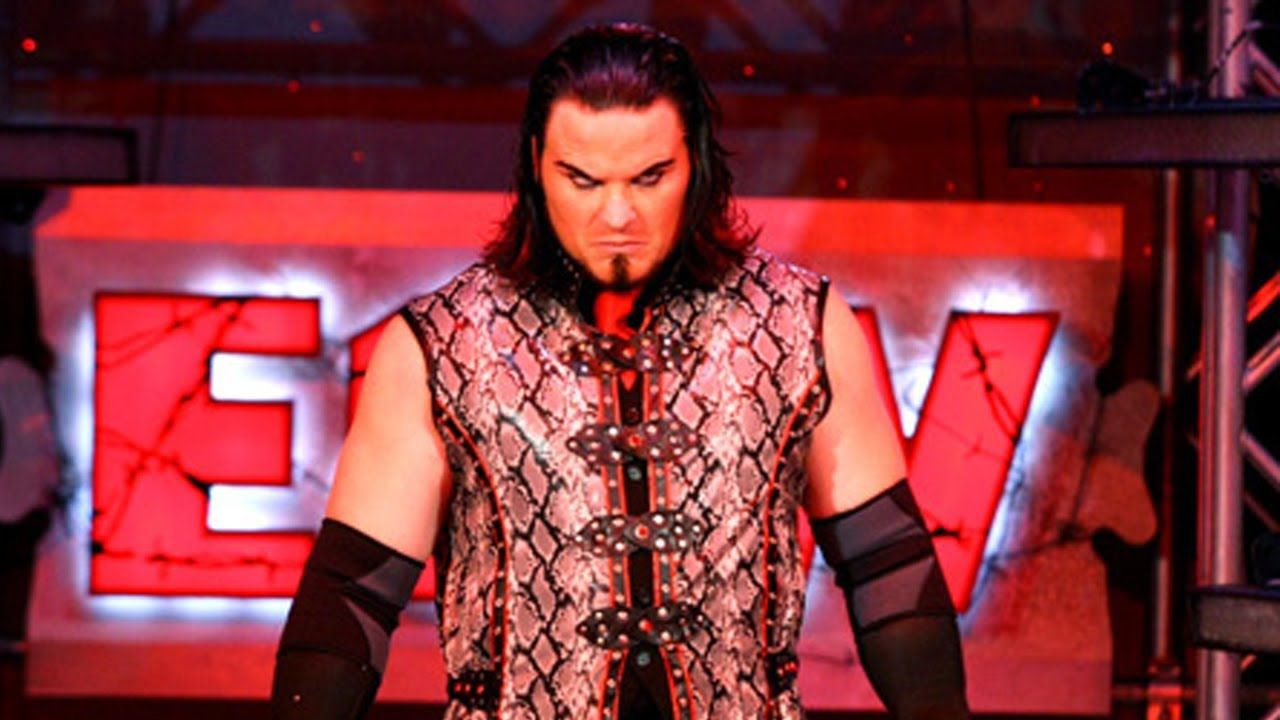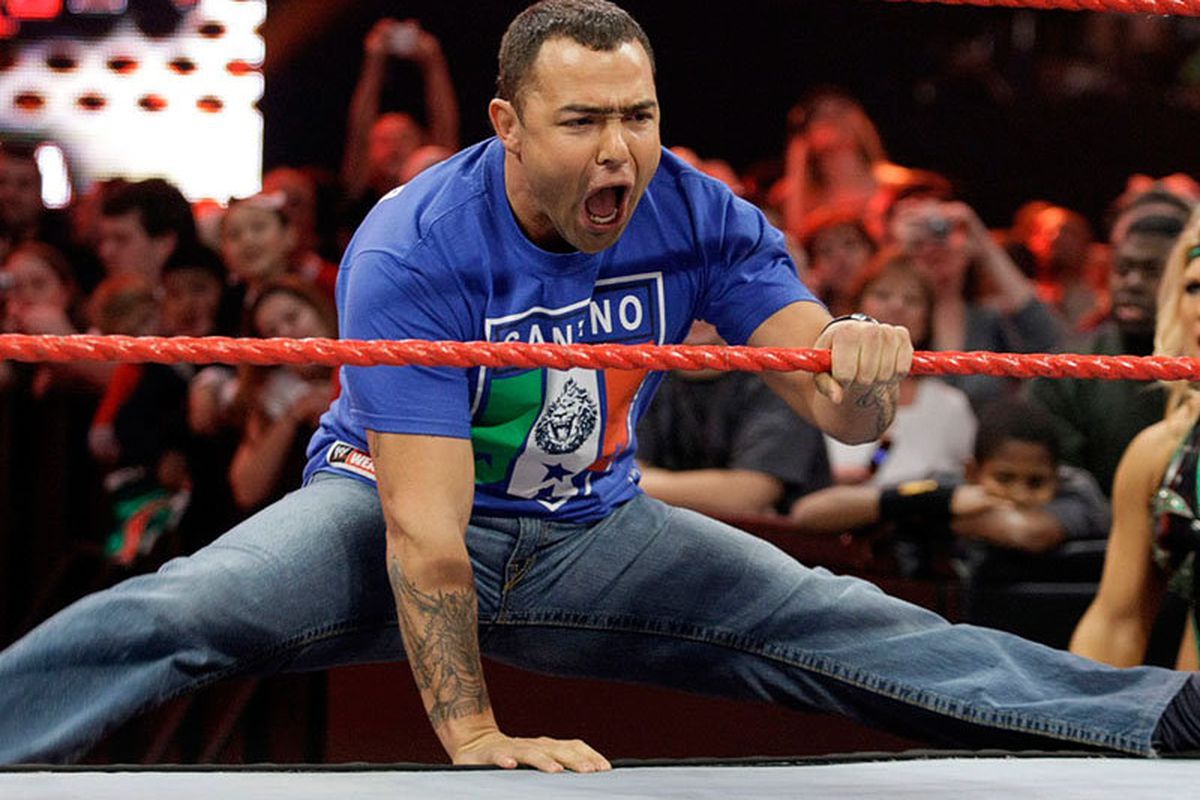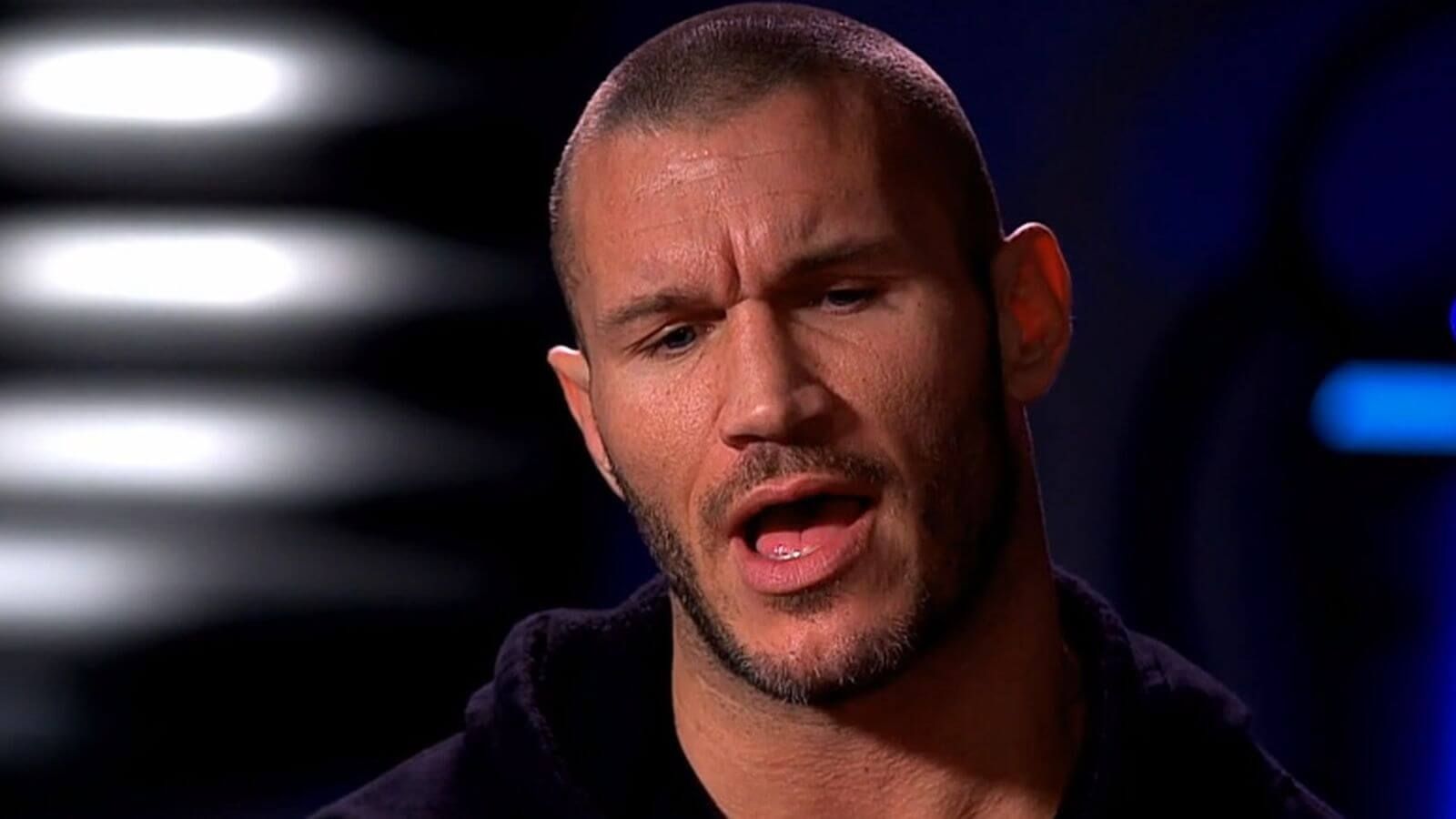Factions are key to pro wrestling history. Just imagine Ric Flair without ever having the Four Horsemen behind him, Hulk Hogan turning heel without the New World Order, or Shawn Michaels and Triple H playing edgy characters without any connection to each other, let alone Chyna, X-Pac, or the New Age Outlaws. Sure, these individual acts could work, but a big part of their legacy and long term success is connected to stables they headed up.
Consider Evolution. While it wasn’t necessarily the greatest stable of all time, it represented the platonic ideal of a faction. Triple H led the group as the top heel and de facto World Heavyweight Champion of his day. Behind him stood all time legend Ric Flair to lend the group an extra ounce of credibility, and feed into the multi-generational identity it was selling. And then there was young Randy Orton and Batista, main event level stars in the making. The group succeeded, and from the point it launched, through the years that followed, ever group member (other than Flair) won multiple world titles and main evented multiple WrestleManias. That’s a faction gimmick working to about the maximum degree.
For every faction that makes history and elevates the stars of everyone connected to it, there are those stables that flop. Sometimes it’s a matter of the wrong talents coming together for a lackluster storyline, or sometimes it’s injuries derailing the original plan. Other times, there’s a simple miscalculation, as the powers that be misread their audience and we get a dud of a group.
Factions—including ones that simply do not work—are nothing new in wrestling. This article reaches back as far as 1990 to look at nearly three decades worth of the worst stables pro wrestling has had to offer.
30 1990: The Twin Towers
The Big Boss Man and Akeem were each good workers and quite reasonable foils for heroes like Hulk Hogan and Randy Savage in their late 1980s, early 1990s prime.
Unfortunately, as much as both guys were big and reasonably over, they teamed up in an era when fans knew not to expect them to achieve much.
The Twin Towers were largely glorified jobbers to the stars. Despite getting pulling off the occasional successful attack on a top face, when the chips were down in big matches—let alone when a title was on the line—the big men crumbled. In the end, the Twin Towers were background players to sell the Mega Powers angle, and come across more like goofs than the considerable talents involved deserved.
29 1991: The York Foundation
The York Foundation was founded on a sound enough foundation, with young Terri Runnels accumulating heel talent under the gimmick that she was a tech savvy accountant, building her stable in a calculated fashion.
While the gimmick was campy, it fit adequately for its era. Unfortunately, the talents chosen for her group were an odd hodge podge of guys, featuring guys like Terry Taylor and Ricky Morton who were famous, and most successful as faces and felt wedged into contrived heel roles. The group was also missing a true leader or threat to even a mid-card title, and spent most of its time feuding with up and coming Dustin Rhodes. Their lone real accomplishment was to win the short-lived Six Man Tag Team Championship.
28 1992: Kamala’s Entourage
Kamala debuted in the late 1970s as a genuine monster heel, who in some ways felt like a poor man’s Andre the Giant. By the early 1990s, Kamala was on the wrong side of 40 and the gimmick was largely played out.
The big man settled in for his second WWE run. The company elected to put an entourage around him. Mind you, giving him a manager made reasonable sense, both for the time period he was operating under when many heels had corner men, and because his savage gimmick demanded an intermediary. However, having both Harvey Wippleman and Kim Chee as his handler felt like overkill, especially for a guy who was going to be fed to The Undertaker, then become mostly a comedic bit player.
27 1993: The Four Horsemen
For their cumulative history, the Four Horsemen are quite arguably the greatest faction in wrestling history. However, when the group reunited in 1993, it marked a turning point.
The first indicator the Horsemen would be a shell of their former selves: after Tully Blanchard decided not to re-sign with WCW, they gave his spot to Paul Roma.
Roma had previously peaked working a tag team with Hercules, and had never won a championship in a major company. He felt out of place on screen, and reportedly clashed with Flair behind the scenes. Add on Ole Anderson as a non-wrestling, part-time advisor role. The consensus is that Flair and Arn Anderson would've been better off renewing their on-screen friendship, and left the stable to rest until they were ready for a real run in 1995.
26 1994: The Three Faces Of Fear
After Hulk Hogan had dispatched of Ric Flair, WCW went looking for his next challenger. The Three Faces of Fear arose, with Kevin Sullivan as the mastermind (fair enough), Avalanche as the super heavyweight menace and The Butcher—formerly known as Brutus Beefcake—as Hogan’s in ring challenger.
There was some shock to Hogan’s real life, and kayfabe best friend turning heel on him. Beefcake had never broached main event status for any company, though, and was a bit of a joke challenging Hogan in the build to WCW’s biggest annual show, Starrcade. Starrcade would turn out to be the nadir for this shell of a heel super group, as not only did Hogan pin The Butcher with ease, but Sullivan lost a match to Mr. T, and Avalanche lost the only reasonably good match the group had to Sting.
25 1995: King Mabel And Sir Mo
1995 saw WWE in the doldrums. While Diesel rode a wave of momentum coming out of 1994, he wasn’t at all ready for the face of the company role thrust upon him. To make matters worse, that summer WWE booked one of the few men bigger than him as his challenger—Mabel.
Coming out of the Men on a Mission tag team, Mabel won the King of the Ring tournament and was positioned as the company’s top heel. He wasn’t even a little over, and hardly had the skill in the ring to make up for it. The result was a historically bad feud and blow off match with Diesel, made only worse by having his old partner Mo play his heel sidekick in the background.
24 1996: The Alliance To End Hulkamania
WCW wasn’t exactly thriving before Hulk Hogan arrived in WCW, but as he got entrenched, things grew campier around him as WCW clawed at the '80s magic that made him a megastar. While the Three Faces of Fear were lame, and the Dungeon of Doom felt cartoonish, the Alliance to End Hulkamania was completely ridiculous.
The group was primarily the Dungeon of Doom and Four Horsemen teaming up, along with other heels.
The idea of all of them feeling the need to ally with one another to take down Hogan was silly enough.
Their culminating Doomsday Cage Match, that saw Hogan and Randy Savage work their way down a nonsensical cage structure, fighting their way through gauntlet of bad guys, was one of the most embarrassingly dumb matches WCW ever put on.
23 1997: The Dungeon of Doom
WCW’s Dungeon of Doom stable felt outdated and a bit absurd even in its prime. By 1997, though, after the New World Order had debuted and dominated WCW television, Kevin Sullivan’s faction came across as downright embarrassing.
When pretty much every heel who mattered was affiliated with the nWo, the Dungeon lingered, kind of playing faces, but mostly jobbing out to whomever they came across anyway. The last gasp of breath for the group was a program opposite the Four Horsemen, and particularly Sullivan’s feud with Chris Benoit, but that hardly justified the group sticking around this far past its best-by date.
22 1998: Latino World Order
Based on the success of the New World Order, it’s not totally ridiculous for WCW to have set up spin off groups. While some pundits criticize the Wolfpac for over-exposing the group, they were at least over with the fans as the time and generated some intrigue as a third party to the nWo Hollywood and the WCW faithful.
The Latino World Order came off as a bit of parody of the nWo, as a cluster of undervalued luchadors banded together. The concept had some potential, but teaming up didn’t do much for the individual talents’ fortunes, as they remained stuck in the mid card or lower. Worse yet, the faction gimmick may have actually held some of the group's bigger stars back.
21 1999: The J.O.B Squad
Just reviewing the roster of the JOB Squad, one can glean a sense of who they were. Guys like Al Snow, Bob Holly, and Scorpio in particular were quite talented, but peaked as mid-card guys.
The joke, of course, was that these guys were mostly jobbers, and thus playing with an insider term.
Additionally, their shirts were stylized as similar to what the New World Order wore on WCW television. So, this was also WWE poking fun at that bloated stable that was no longer an elite unit.
20 2000: The nWo 2000
The New World Order was white hot when it first started up in 1996, and remained one of the most over groups in wrestling through 1997. By the time they executed the infamous finger poke of doom, which saw Kevin Nash hand Hulk Hogan the world title, reuniting the nWo factions, the bloom was off the rose.
The nWo 2000 was the reboot nobody asked for, with a mix of traditional guys and the addition of Bret Hart, Jeff Jarrett, and the Harris Brothers. While the idea of Hart being a part of the group fit given his level of stardom and WWE roots, and it was a reasonable way of elevating Jarrett, the Harrises did nothing to bolster the group's credibility. More importantly, the faction felt played out, and came off desperate in turning back to the same concept yet again.
19 2001: The Alliance
When WWE bought WCW, the move represented an unparalleled opportunity to construct dream matches and reach new heights with the deepest roster in wrestling history. Sure, there was the limitation of WCW stars not coming over, instead riding out their guaranteed money from Turner. However, with guys like Booker T, DDP, and Lance Storm at their disposal, WWE should've thrived.
Making all of the WCW alumni a unified group of heels was questionable. Teaming them with ECW alumni further diluted the sense of WCW vs. WWE. Worse, putting Shane and Stephanie McMahon in charge of the group, and adding other WWE guys at the fore of it completely undermined the concept. The Alliance is remembered now as not only a bad faction, but one of the biggest disappointments in wrestling history for failing to capitalize on the huge potential WWE had at its fingertips.
18 2002: Yet Another Foreign Heel Group
There’s a long history of wrestling playing off of fans’ nationalist leanings to create cheap heat, and cast evil heel foreigners against local heroes. The concept worked best when there were real issues at stake, like foreign heels along the lines of Nikolai Volkoff and Nikita Koloff running rampant during the Cold War, or the Iron Sheik winning the WWE Championship amidst tensions between the US and Iran.
Insinuating tensions with Canada and the UK in the 2000s—that was a reach.
All of its talented members, William Regal, Christian, Lance Storm, and Test felt anachronistic at best, and the group was scraping to play to the lowest common denominator for heat. When they went after The Undertaker, it felt less like setting up a showdown than a mercy killing for this poorly conceived faction.
17 2003: Sports Entertainment Xtreme
Vince Russo was notorious for booking provocatively. That includes taking responsibility for the edgy push of the Attitude Era, and for some of the more outlandish latter day concepts that WCW took on. When the Jarretts brought him on to work for TNA in its earliest days, it’s little surprise that he picked up where he left off.
Sports Entertainment Xtreme was all but built for the sole sake of the acronym (you can put it together), and featured Russo himself heading up a group of career mid-card talents. Russo was nowhere near over enough to make this stable a success with the fans. In the end, the faction’s biggest claim to fame was helping to get over a young AJ Styles who feuded with them en route to bigger things.
16 2004: The Cabinet
Through a mix of happenstance and experimentation, WWE rebooted Bradshaw in 2004 from a barroom brawler to a boardroom bully and main event guy. When Eddie Guerrero felt the pressures of the WWE Championship were too much for him, JBL got the nod to run with the title.
While JBL was never a technical wizard, he did grow into his role as a loud mouthed heel on the mic. WWE didn’t exactly do him any favors, by assembling The Cabinet. The Basham Brothers were a reasonable enough tag team by the standards of the day. Orlando Jordan, however, was in over his head as the second in command, and a young Amy Webber (followed by Jillian Hall) wasn’t ready to manage at the top of the card either. The result was a gimmick that felt forced and underwhelming.
15 2005: Vince’s Devils
When wrestling fans try to justify their fanship to outsiders, one of the hardest parts to rationalize is the business’s history of objectifying women. The Vince’s Devils stable represents some of the worst of that dynamic, and it’s all the more problematic because it happened in the 2000s and post-Attitude Era.
The group of Torrie Wilson, Candice Michelle, and Victoria were set up as Vince McMahon’s entourage, playing up the eye candy factor.
While Victoria was a legitimately talented worker, her efforts from this era are largely overshadowed by Wilson and Michelle’s farcical wrestling. The stable’s storyline culminated in 2006, with Wilson and Michelle ultimately feuding and blowing off their issue in an embarrassing WrestleMania Pillow Fight.
14 2006: The Spirit Squad
In late 2012, WWE used The Shield stable to launch three young talents to stardom. Six years earlier, another group of top level prospects got their start on the main roster as a unit that feuded with main event mainstays.
The trouble was, in 2006, the rookies were cast as male cheerleaders.
While Vince McMahon was right in his theory that male cheerleaders would draw heat, the gimmick was far too comedic to get over at the level WWE was grasping toward. Out of the five man unit, only Dolph Ziggler would survive as a main roster mainstay, and even he would need to disappear and re-debut completely repackaged to get the stink of the faction off him.
13 2007: The New Breed
WWE’s version of ECW ranged from conflicting creative visions between Paul Heyman and Vince McMahon, to Rob Van Dam’s personal issues, to not being able to live up to the old ECW legacy in the WWE environment of post-Attitude WWE.
In a sense, The New Breed vs. ECW Originals angle should have worked as a way of transitioning from old the guard of Extreme fan favorites to the newer stars WWE was trying to get off the ground. However, casting the young guys as the heels made it problematic for fans to know who to root for. Moreover, WWE gave into nostalgia on this feud with the old guys winning the biggest match of the rivalry at WrestleMania 23, making the crop of new stars feel ineffectual.
12 2008: Glamarella
Nowadays, WWE touts its Women’s Revolution and empowerment of female stars to be as heavily featured as their male counterparts. There’s an uncomfortable background story there that, for years, WWE undervalued the tremendous female talents available to them.
In 2008, Beth Phoenix was entering her prime as a powerhouse with a tremendous work rate and a unique look.
While she got her title reigns, some of what should have been the most dominant stretch of her career got overshadowed by her partnership with Santino Marella and sidekick Rosa Mendes.
The fact that one of the best female talents WWE had squandered so much time in lame comedy bits that better spotlighted her male counterpart was unentertaining in the moment, and downright embarrassing in retrospect.
11 2009: Legacy
Randy Orton’s Legacy stable had potential. Indirectly spinning off of Evolution, the group was built on the premise that Orton would mentor along the next generation of stars, and that those next stars would be second or third generation guys.
Legacy had its moments, including warring with Triple H, the McMahons, and DX. However, the group’s—no pun intended—legacy speaks volumes. While Orton continues to be an upper level star, Ted DiBiase Jr. ultimately faded into obscurity. And though Cody Rhodes has made a name for himself outside of WWE it's not because of how far this stable advanced him, than in spite of WWE booking him like an afterthought time after time.

